Overview
Meteorological summer (June through August) ended up producing above normal rainfall and slightly below normal temperatures for central and southeast Illinois. The rainfall distribution was quite skewed however, with most of the heavy rain falling in June and early July, and drier weather prevailing for much of the second half of the period. The rainfall maps below indicate that much of the Midwest saw above normal rainfall this summer, while parts of west-central Illinois had 1.5 to 2 times the normal amount. Only one site broke in to the "Top 10" wettest summers, as Peoria was 4th wettest, at 19.47" (normal is 10.62"). Temperatures were unremarkable, averaging about 1 degree below normal.
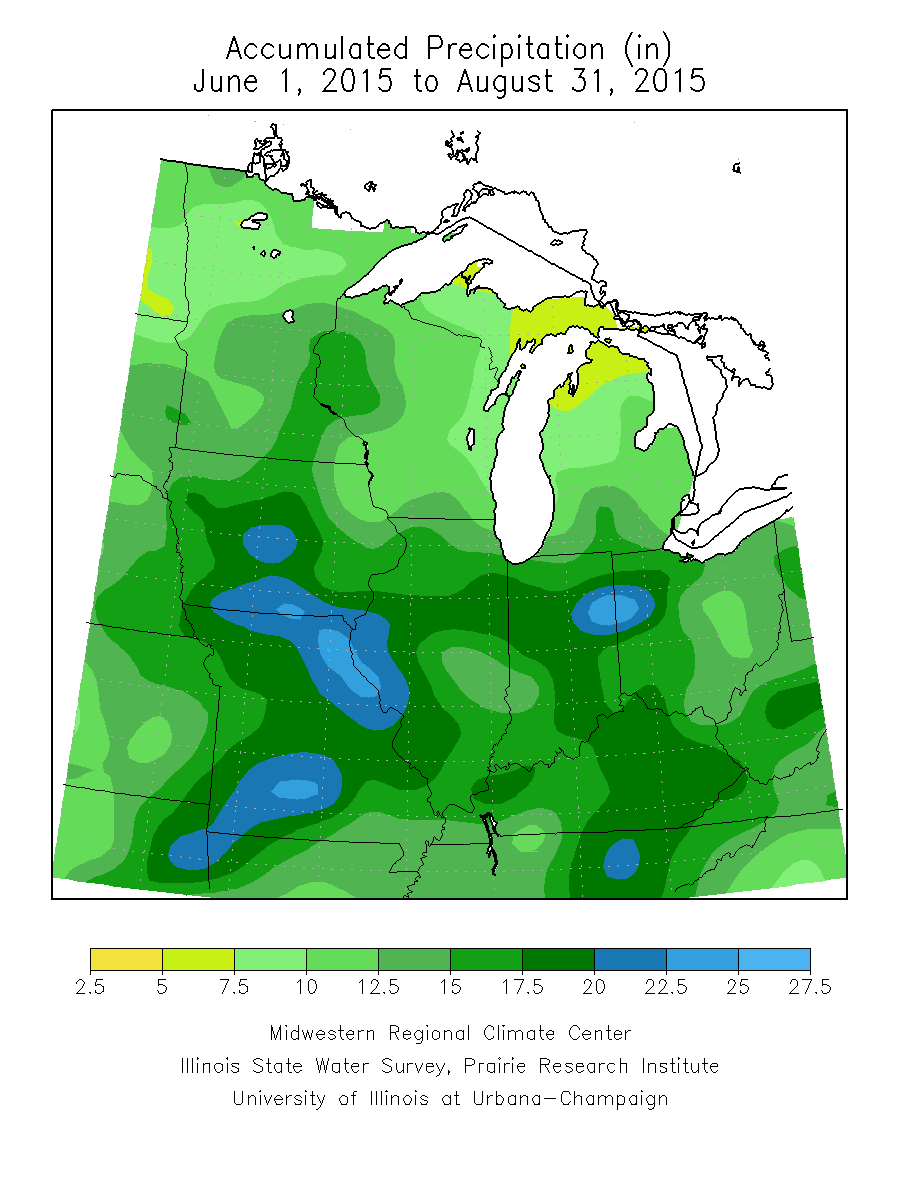 |
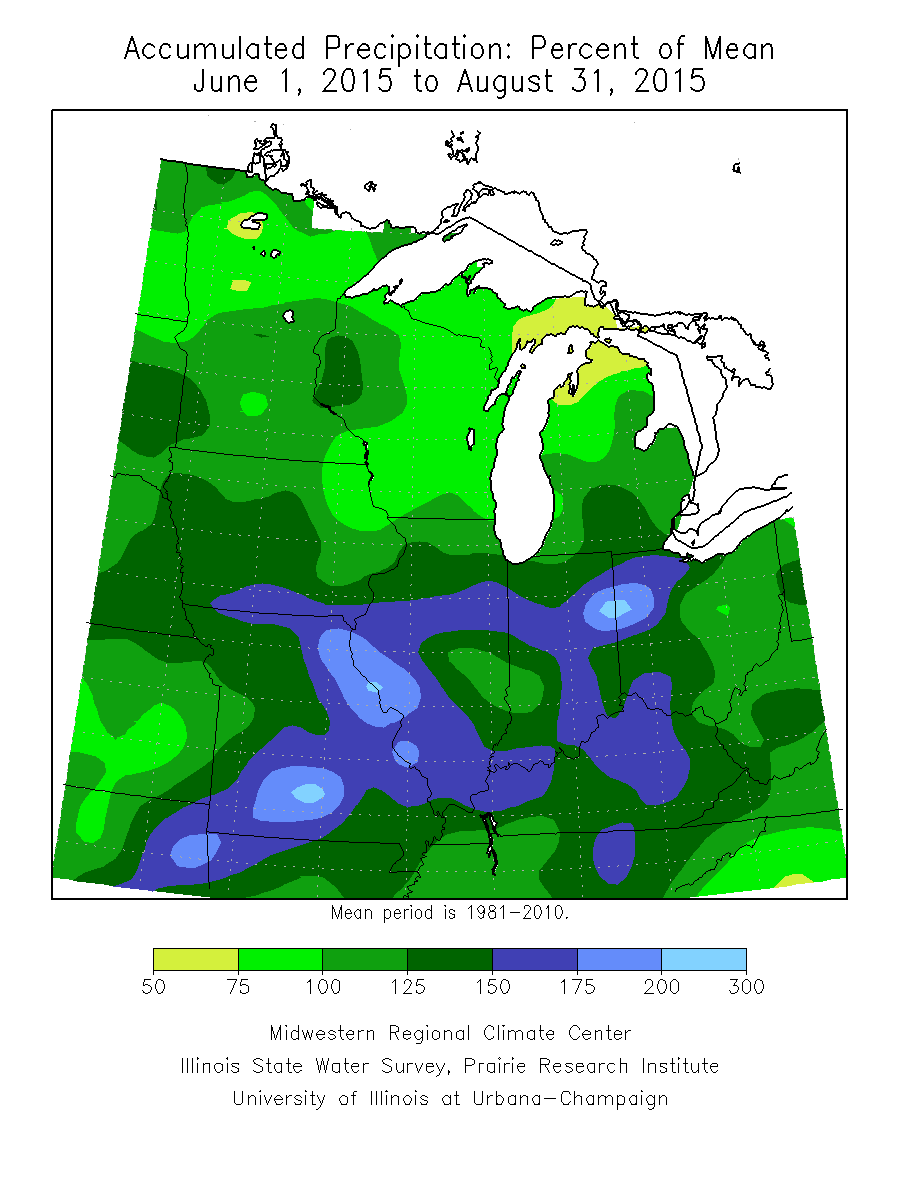 |
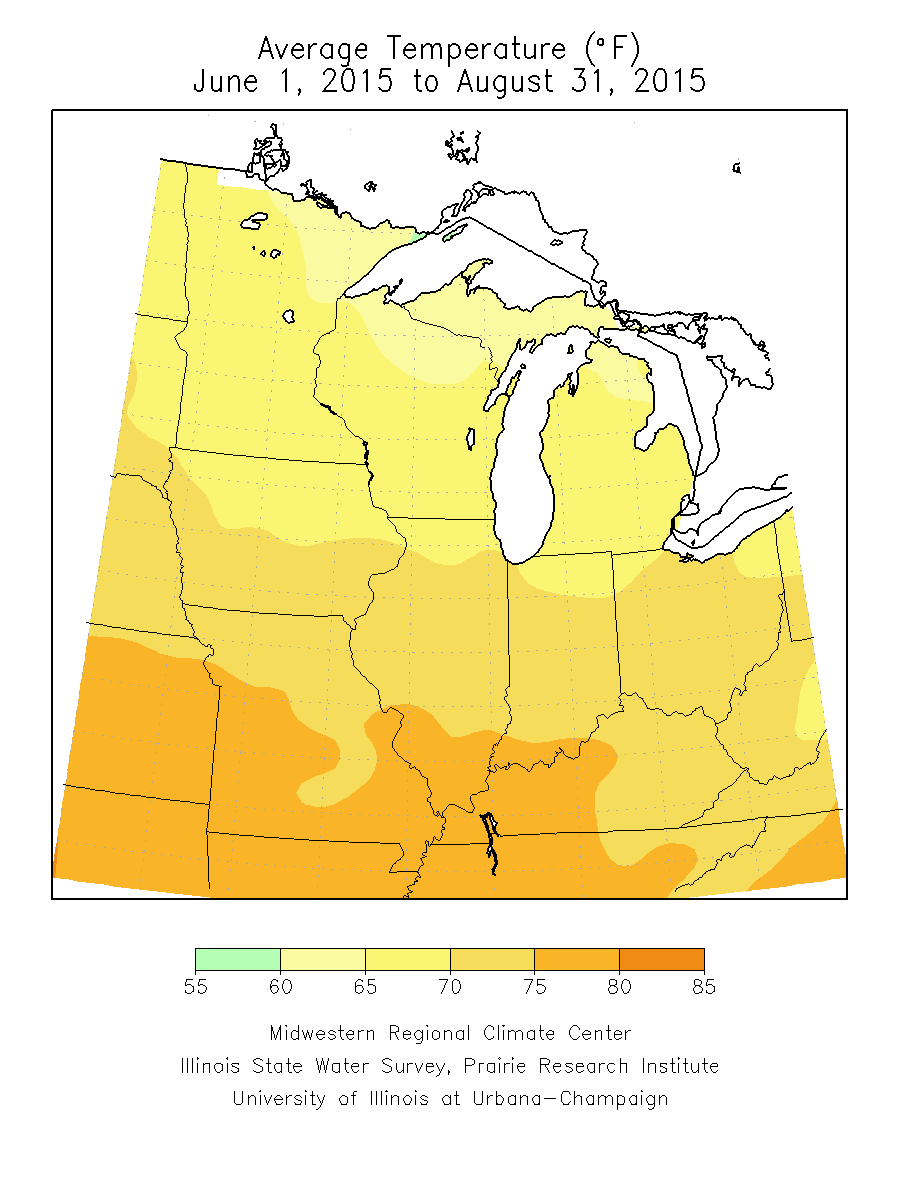 |
 |
Links below are the seasonal climate summaries for area cities. Only the summaries for Peoria, Springfield and Lincoln are considered "official", meaning they are the station of record for their respective locations. The other summaries are "supplemental", meaning another location in the area is the official climate station for that city.
Climate data for other area cities is available at http://www.nws.noaa.gov/climate/xmacis.php?wfo=ilx
June Review
June was an extremely wet month for central and southeast Illinois, and was the wettest June on record for Illinois (statewide average) with 9.53". This put June 2015 as the second wettest month all-time, behind September 1926 (9.62"). An active jet stream brought numerous upper level disturbance and low pressure systems through the area, enhancing rain amounts, starting the week of June 7th. The remnants of tropical storm Bill moved into the area on June 18-19, bringing more heavy rain of 2 to 5 inches to the southern half of Illinois. Then, for the 20th through the end of the month, numerous frontal boundaries and upper level disturbances tracked across the area, bringing more heavy rain. This put most reporting sites into their top 10 wettest June on record. Cities that had their wettest June included: Canton (13.71"), Chenoa (11.83"), Danville (13.05"), Flora (14.63"), Havana (13.75"), Lacon (12.78"), Mackinaw (11.89"), Olney (11.12"), Petersburg (11.31"), Rushville (13.75"), and Sullivan (11.93"). Normal June rainfall across the region is generally 3.50" to 4.50". Flora's total was noteworthy because this was the second wettest month ever recorded, since 1893. This amount of rain caused many area rivers to go above flood stage with major flooding along the Illinois river from Havana to Beardstown and areas downstream, which lasted well into July.
Notable sites with long-term records that approached record wet status:
June Rainfall Maps
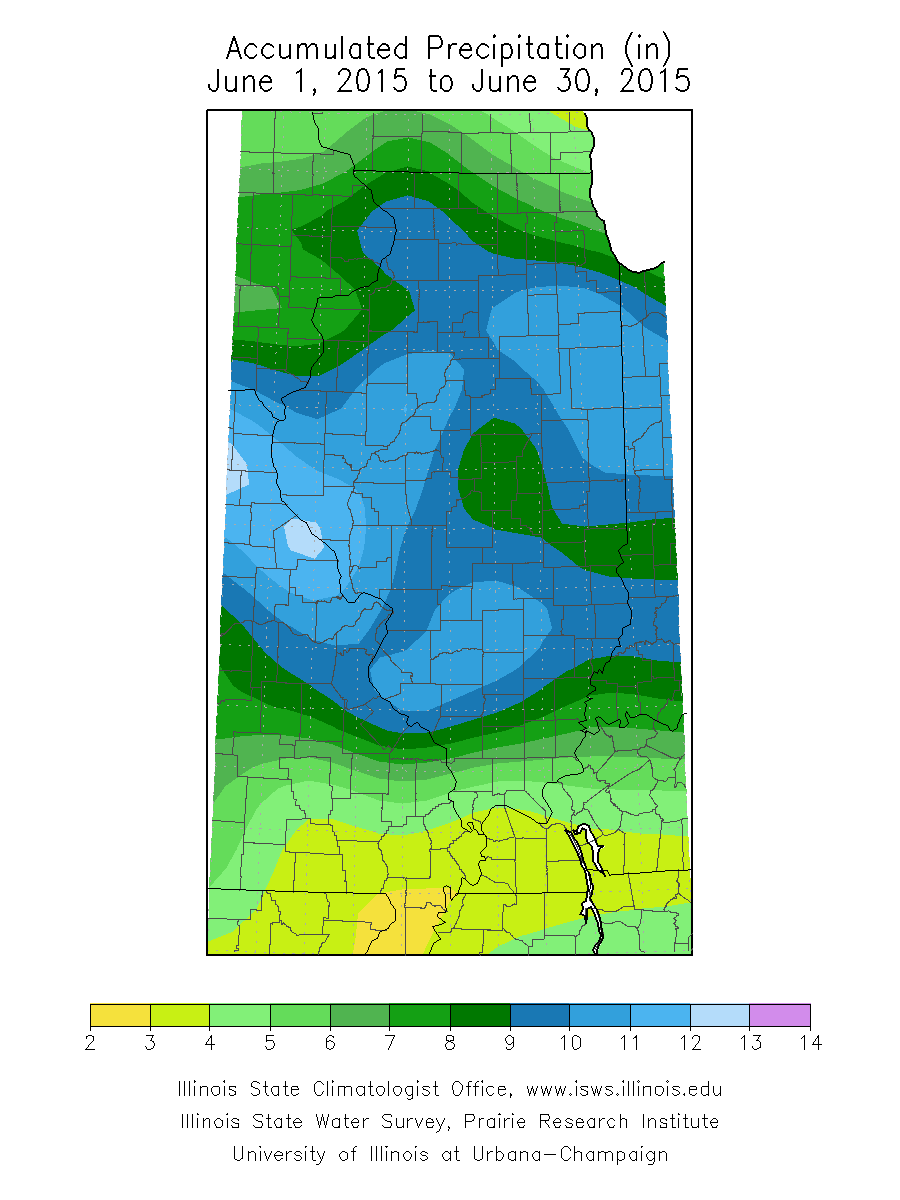 |
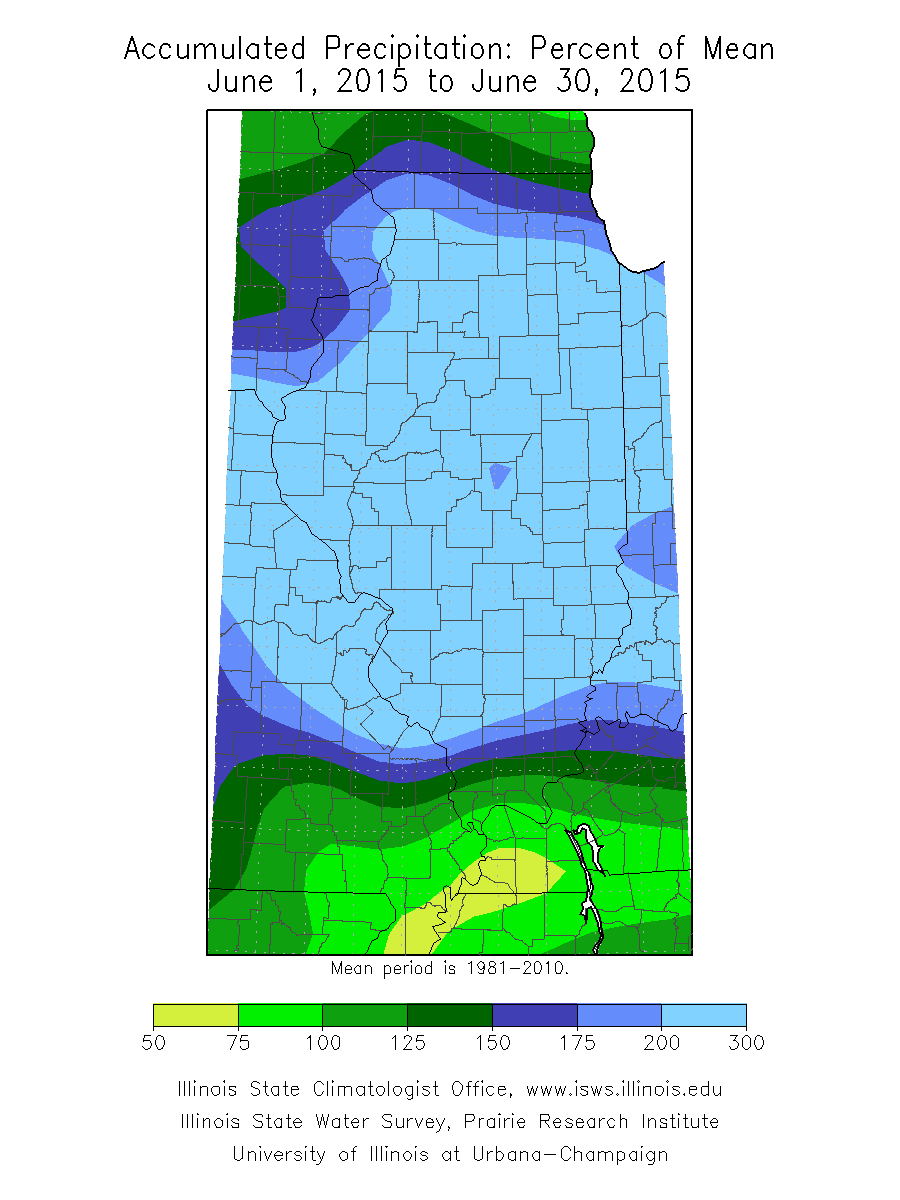 |
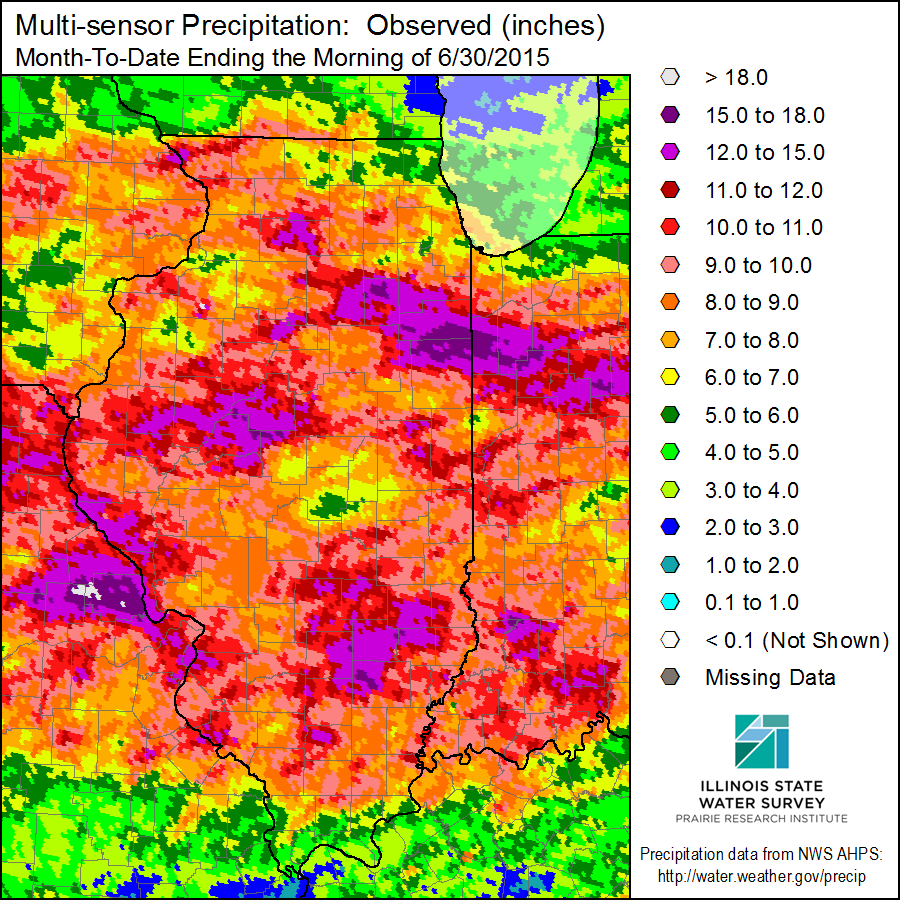 |
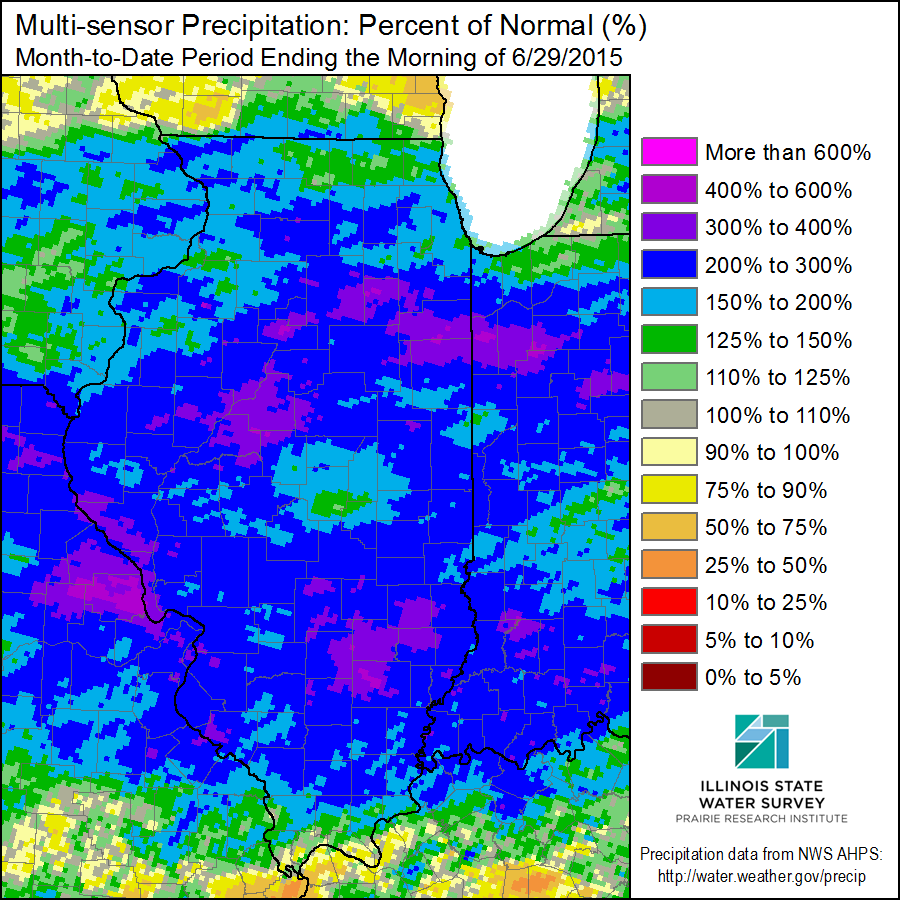 |
July Review
July continued where June left off, with very wet conditions across much of central Illinois. An active storm track that remained centered on the Midwest, resulted in repeated heavy rains. In July, the heavier rains were focused on west-central IL, and areas along and north of the I-74 corridor. A pocket of drier (near to below normal) conditions developed during the second half of the month in east-central IL, and areas south of I-70. Increased clouds and frequent rainfall kept temperatures 1-2 degrees below normal, for the monthly average.
A couple significant weather events impacted the area during the month:
July Rainfall Maps
 |
 |
August Review
The average temperature for the month of August was 1-2 degrees below normal for central and southeast IL. However, the first half of the month featured afternoon temperatures at or above normal with another wave of some very warm to hot temperatures again from the 15th through the 19th before a couple of strong cold fronts brought some fall-like temperatures to our area to during the period from the 20th through the 29th. Overnight lows dropped to the upper 40s to lower 50s during this late August "cool snap". Rainfall for the month averaged below normal across most of the area with several potent weather systems for August bringing scattered strong to severe storms to the area.